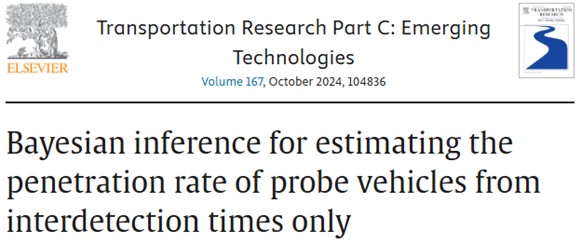Rafael Delpiano, Juan Carlos Herrera
Abstract
Data provided by floating vehicles have the same limitation as that provided by an imperfect stationary detector that undercounts vehicles: they provide data from an unknown proportion of the total flow. Since the knowledge of this proportion is critical for some applications, its value is usually estimated by complementing with data provided by other monitoring infrastructure. However, this type of infrastructure is not the norm in many cities, particularly in developing countries. This paper extends a previously proposed method to estimate this penetration solely from a series of inter-detection times. The improved method is based on Bayesian inference and supports a series of passage times coming from multilane infrastructure, albeit still requiring an uninterrupted traffic regime. The method was applied to actual RFID interdetection times from a four-lane weaving urban freeway segment in Santiago, Chile. The resulting estimated rates are consistent with those reported by the freeway operator, showing the method’s capabilities. Thus, the method is instrumental in successfully taking full advantage of technology already in place in many cities without needing new investments in monitoring infrastructure.
